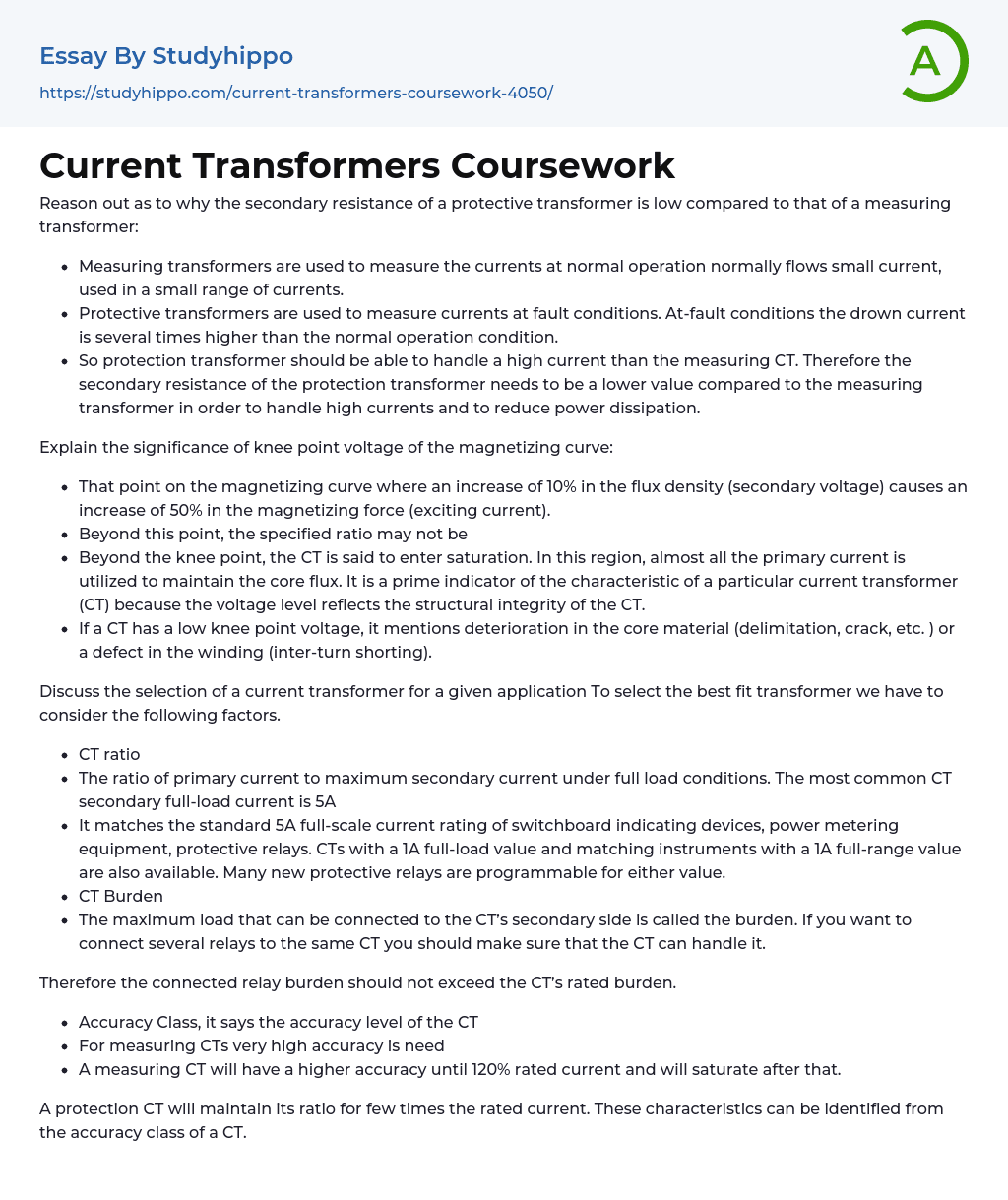The secondary resistance of a protective transformer is lower compared to that of a measuring transformer because measuring transformers are used to measure currents at normal operation, which typically flows small current in a small range of currents. On the other hand, protective transformers are used to measure currents at fault conditions, where the drawn current is several times higher than the normal operation condition. As a result, protective transformers need to be able to handle high currents and reduce power dissipation, requiring a lower secondary resistance compared to measuring transformers.
The significance of the knee point voltage on the magnetizing curve is that it represents the point where a 10% increase in flux density (secondary voltage) causes a 50% increase in magnetizing force (exciting current). Beyond this point, the specified ratio may not be
...applicable. When the CT reaches the knee point and enters saturation, most of the primary current is utilized to maintain the core flux. The knee point voltage serves as a prime indicator of a specific CT's characteristics, reflecting its structural integrity.
The selection process for a current transformer should take into account the following factors:
- CT ratio
- The ratio between the primary current and the maximum secondary current under full load conditions. The most commonly used secondary full-load current for CTs is 5A.
- This value matches the standard 5A full-scale current rating of switchboard indicating
devices, power metering equipment, and protective relays. There are also CTs available with a 1A full-load value, along with matching instruments with a 1A full-range value. Additionally, many modern protective relays can be programmed for either value.
Therefore, it is crucial that the combined burden of the connected relays does not exceed the CT's rated burden.
- Accuracy Class indicates the level of accuracy for the CT.
- CTs require a very high level of accuracy for measurement purposes.
- A measuring CT will have higher accuracy up to 120% of the rated current, and then it will saturate.
A protective CT maintains its ratio for several times the rated current, and these characteristics can be determined by its accuracy class.
- Academia essays
- Academic And Career Goals essays
- Academic Integrity essays
- Brainstorming essays
- Brown V Board of Education essays
- Brown Vs Board Of Education essays
- Coursework essays
- Curriculum essays
- Distance learning essays
- Early Childhood Education essays
- Education System essays
- Educational Goals essays
- First Day of School essays
- Higher Education essays
- Importance Of College Education essays
- Importance of Education essays
- Language Learning essays
- Online Education Vs Traditional Education essays
- Pedagogy essays
- Philosophy of Education essays
- Purpose of Education essays
- Scholarship essays
- Study essays
- Studying Abroad essays
- Studying Business essays
- Technology in Education essays
- The Importance Of Higher Education essays
- Vocabulary essays
- Writing Experience essays
- Atom essays
- Big Bang Theory essays
- Density essays
- Electricity essays
- Energy essays
- Force essays
- Heat essays
- Light essays
- Motion essays
- Nuclear Power essays
- Physiology essays
- Sound essays
- Speed essays
- Temperature essays
- Thermodynamics essays




